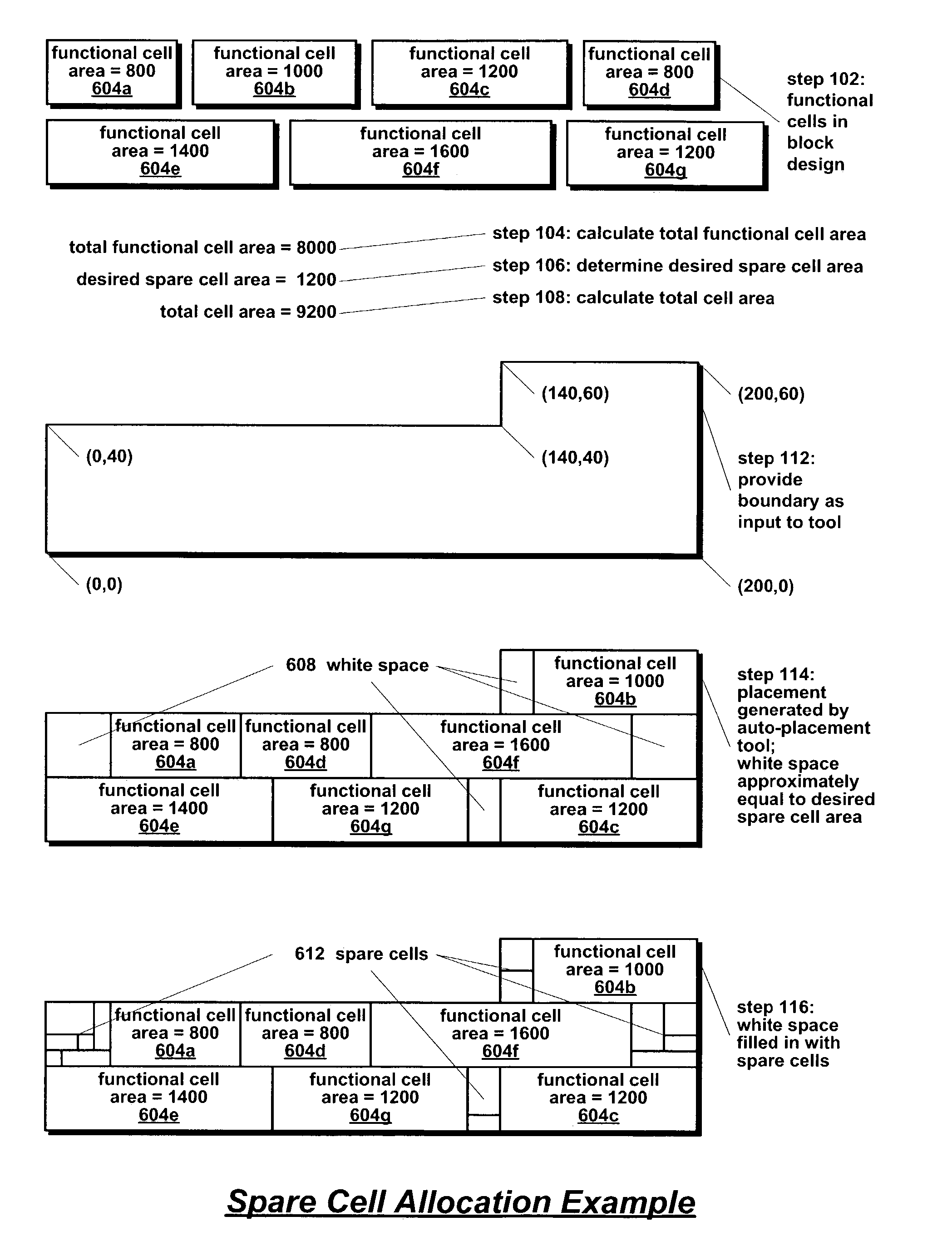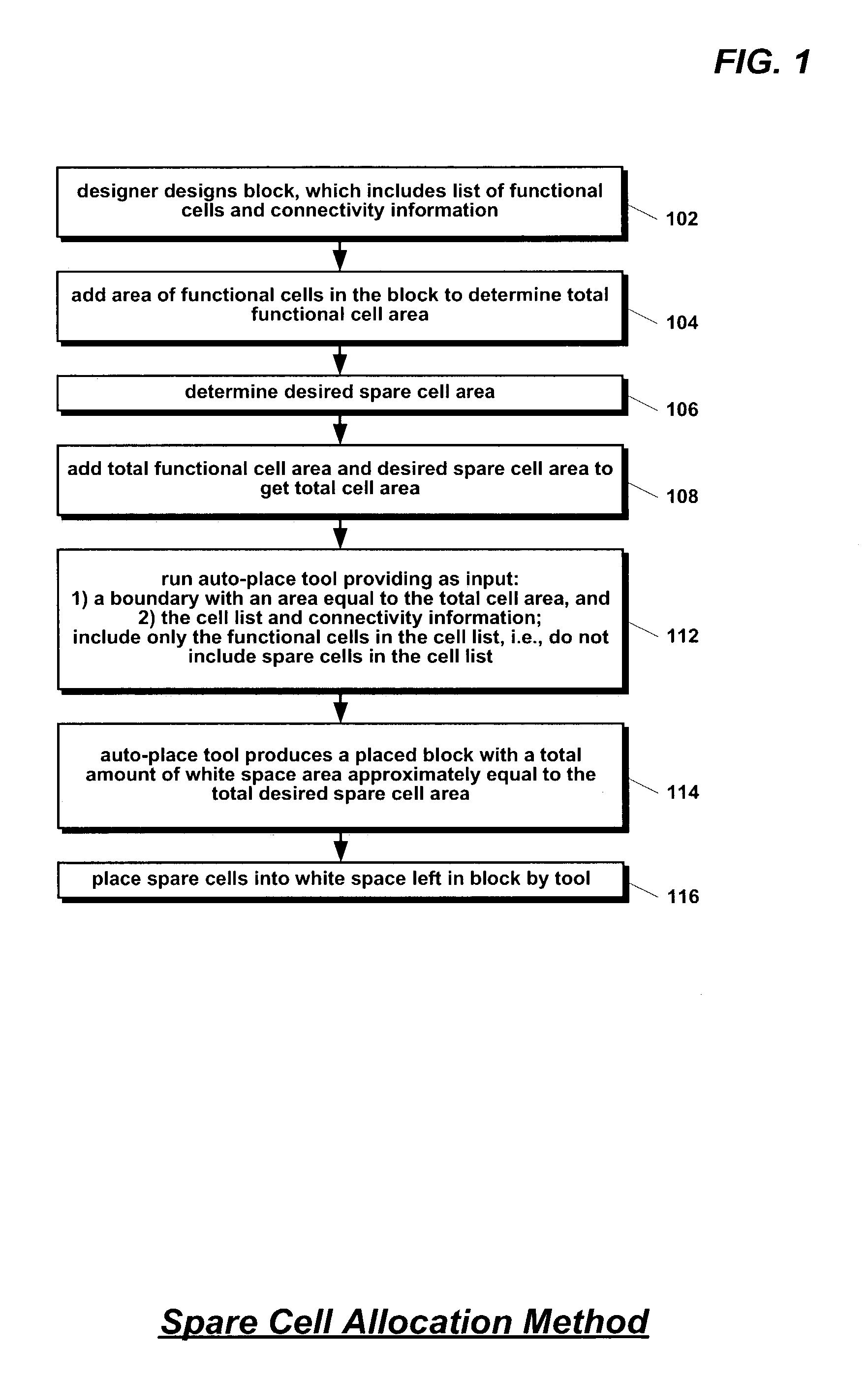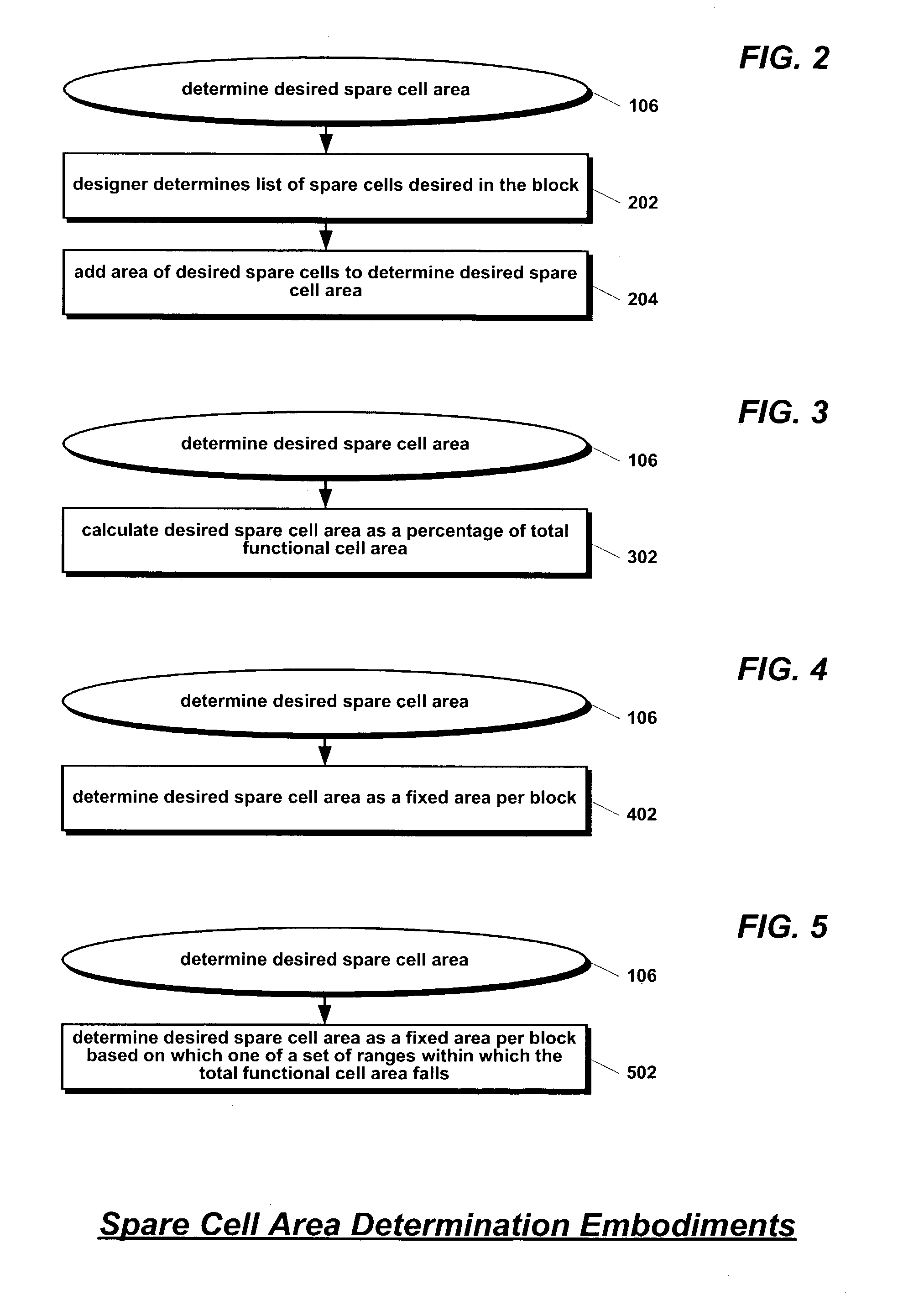Method for allocating spare cells in auto-place-route blocks
a technology of auto-placement and routing blocks, which is applied in the direction of cad circuit design, program control, instruments, etc., can solve the problems of individual dies not being functional, the percentage of dies in the array will be non-functional, and the cost of integrated circuits is the yield, so as to reduce the cost, reduce the final die size, and increase the yield
- Summary
- Abstract
- Description
- Claims
- Application Information
AI Technical Summary
Benefits of technology
Problems solved by technology
Method used
Image
Examples
first embodiment
[0041]Referring now to FIG. 2, a flowchart illustrating the step of determining the desired spare cell area of step 106 of FIG. 1 is shown. Flow begins at step 202.
[0042]At step 202, the designer determines the list of spare cells desired to be included in the APR block. Typically, the designer selects types and quantities of the spare cells based on the function of the APR block. Large numbers of logic gates, for example, are commonly included in the spare cell list. Flow proceeds to step 204.
[0043]At step 204, the designer adds the areas of the individual spare cells in the spare cell list determined at step 202 to determine the desired spare cell area of step 106. Flow ends at step 204.
second embodiment
[0044]Referring now to FIG. 3, a flowchart illustrating the step of determining the desired spare cell area of step 106 of FIG. 1 is shown. Flow begins at step 302.
[0045]At step 302, the designer calculates the desired spare cell area for step 106 as a percentage of the total functional cell area determined at step 104 of FIG. 1. For example, the designer might calculate the desired spare cell area as 10% of the total functional cell area. The percentage may vary as a function of the complexity and / or size of the APR block. Flow ends at step 302.
third embodiment
[0046]Referring now to FIG. 4, a flowchart illustrating the step of determining the desired spare cell area of step 106 of FIG. 1 is shown. Flow begins at step 402.
[0047]At step 402, the designer calculates the desired spare cell area for step 106 as a fixed area used as the spare cell area for all blocks in the integrated circuit design. For example, the design might fix the desired spare cell area at 500 square microns. Flow ends at step 402.
PUM
 Login to View More
Login to View More Abstract
Description
Claims
Application Information
 Login to View More
Login to View More - R&D
- Intellectual Property
- Life Sciences
- Materials
- Tech Scout
- Unparalleled Data Quality
- Higher Quality Content
- 60% Fewer Hallucinations
Browse by: Latest US Patents, China's latest patents, Technical Efficacy Thesaurus, Application Domain, Technology Topic, Popular Technical Reports.
© 2025 PatSnap. All rights reserved.Legal|Privacy policy|Modern Slavery Act Transparency Statement|Sitemap|About US| Contact US: help@patsnap.com



